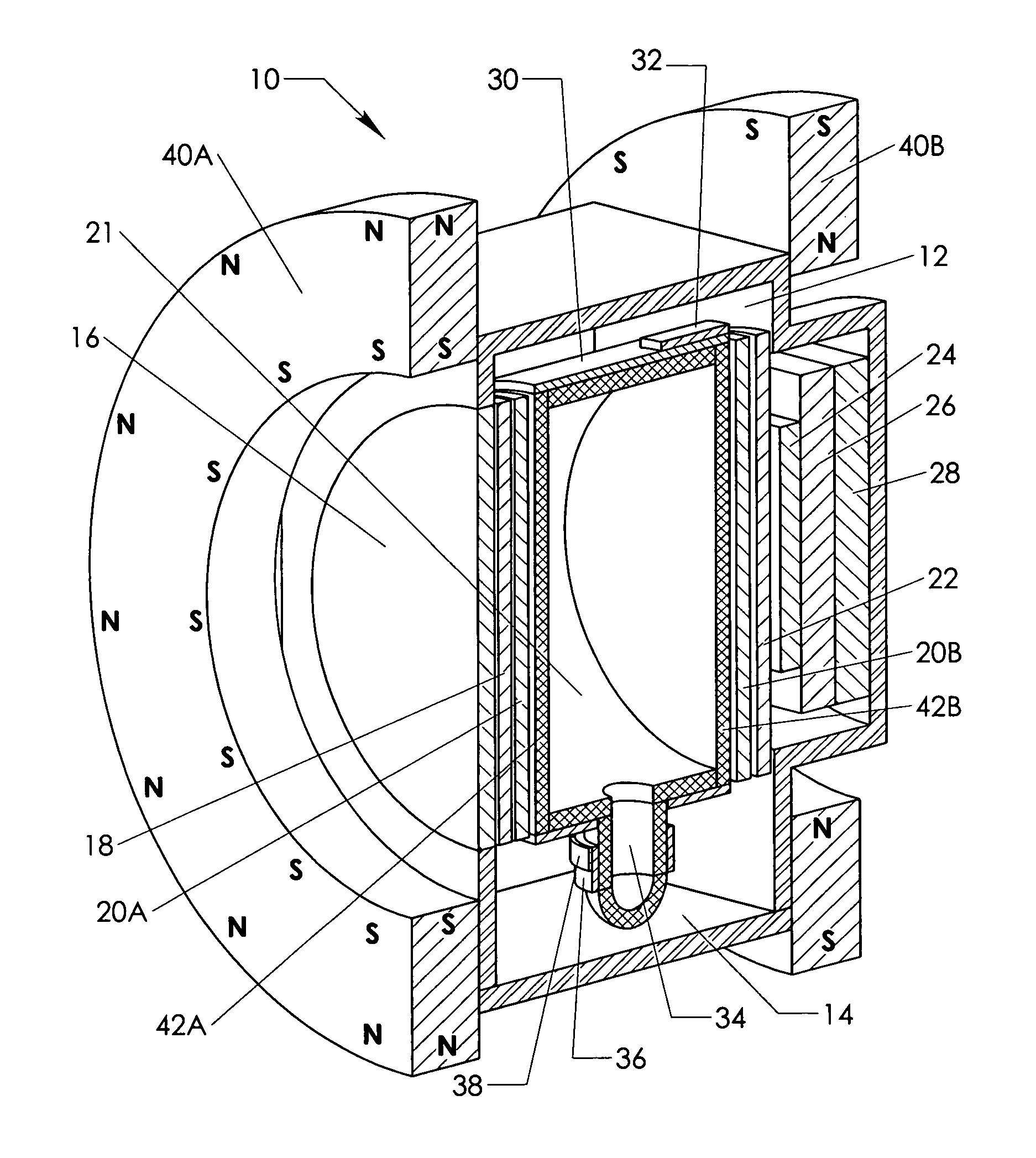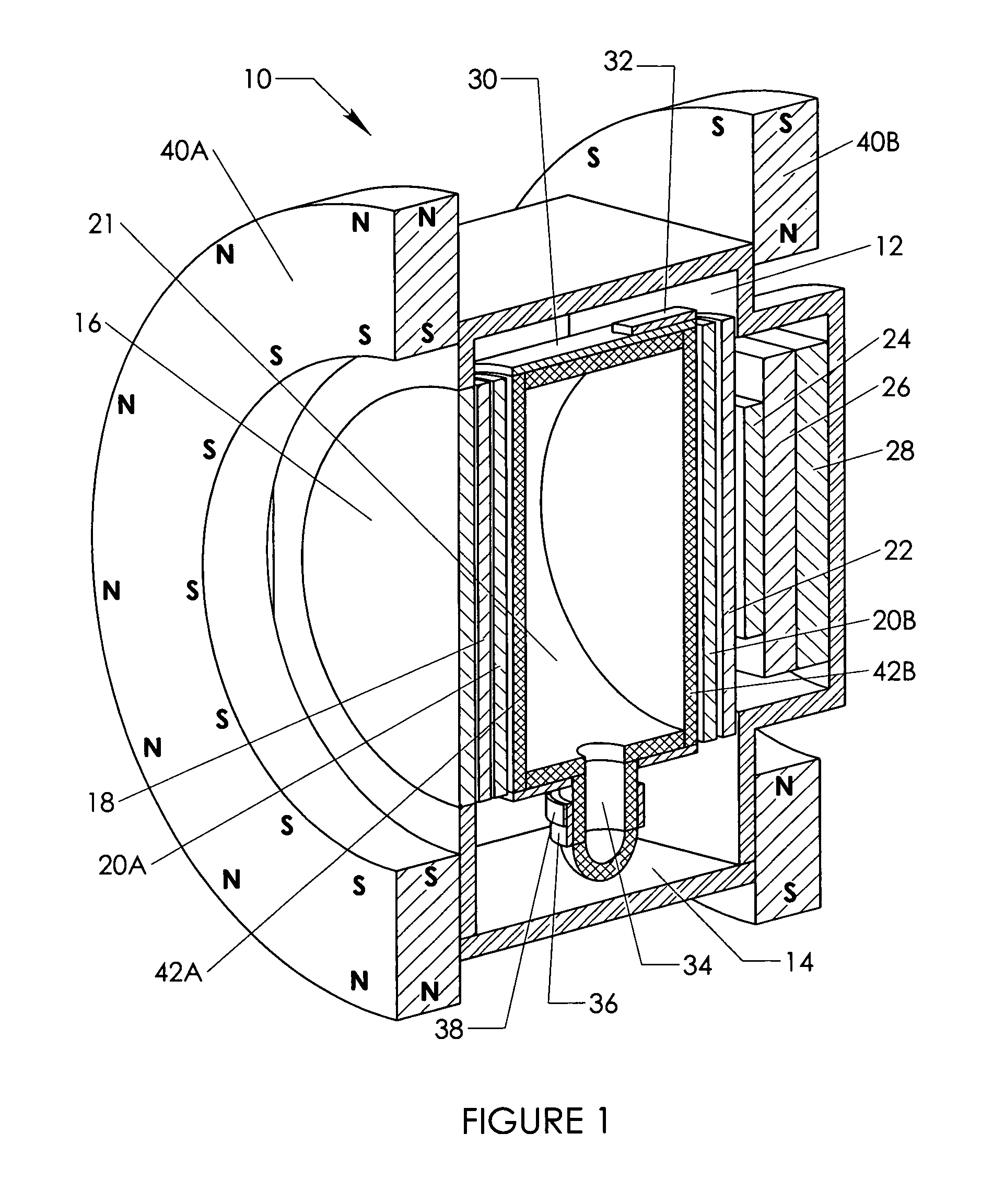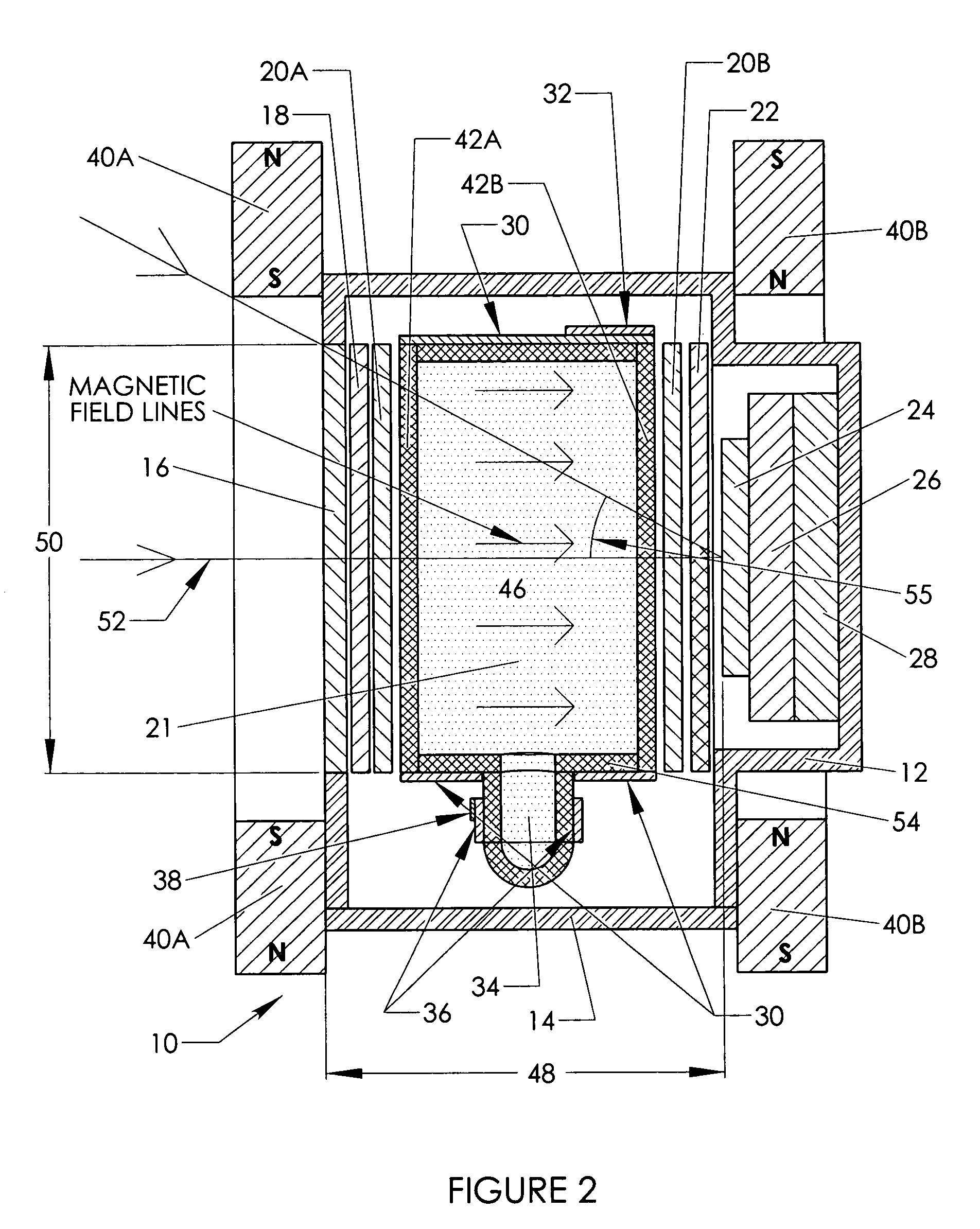Compact narrow band imaging system
a narrow band imaging and compact technology, applied in the field of narrow band imaging apparatus or systems, can solve the problems of small fires in the wilderness that can become forest fires, imaging sensors may be overwhelmed by daylight, and detection presents a much greater challenge, so as to reduce the size and weight of equipment, the effect of reducing the size and weigh
- Summary
- Abstract
- Description
- Claims
- Application Information
AI Technical Summary
Benefits of technology
Problems solved by technology
Method used
Image
Examples
Embodiment Construction
[0026]The following specification, taken in conjunction with the drawings, sets forth the general principles and the preferred embodiments of the present invention. The embodiments of the invention disclosed herein are the best modes contemplated by the inventor for carrying out his invention in a commercial environment, although it should be understood that various modifications can be accomplished within the parameters of the present invention.
[0027]The invention is best described by first describing the design parameters and requirements for the operating principles and components utilized in the several embodiments of the invention.
[0028]Some of the general principles and components are already described in the prior art, such as for example in United States Patent Application Publication No. 2007 / 0017281, published on Jan. 25, 2007, the specification of which is expressly incorporated herein by reference.
General Principles, Design Parameters
[0029]The operation of a narrow band ...
PUM
 Login to View More
Login to View More Abstract
Description
Claims
Application Information
 Login to View More
Login to View More - R&D
- Intellectual Property
- Life Sciences
- Materials
- Tech Scout
- Unparalleled Data Quality
- Higher Quality Content
- 60% Fewer Hallucinations
Browse by: Latest US Patents, China's latest patents, Technical Efficacy Thesaurus, Application Domain, Technology Topic, Popular Technical Reports.
© 2025 PatSnap. All rights reserved.Legal|Privacy policy|Modern Slavery Act Transparency Statement|Sitemap|About US| Contact US: help@patsnap.com



